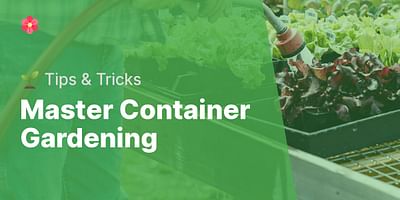Bethany Gislason is an avid gardener who has spent over a decade nurturing perennials. Her passion for gardening has led her to explore new plants and sustainable techniques, resulting in picturesque and enduring gardens. Away from her garden, Bethany is a hiking enthusiast and an ardent reader.
Starting a garden can be an exciting and rewarding experience, especially if you're new to gardening. To help you get started on the right foot, here are some tips for beginners:
1. Start with easy-to-grow perennials: When you're just starting out, it's best to choose plants that are known for their resilience and adaptability. Some great options for beginners include daylilies, coneflowers, hostas, and black-eyed Susans. These perennials are low-maintenance and can withstand a variety of growing conditions.
2. Plan your garden: Before you start planting, take some time to plan your garden layout. Consider factors such as sunlight, soil type, and drainage. Group plants with similar needs together to make watering and maintenance easier. You can also create a focal point or add variety by incorporating different heights, textures, and colors.
3. Prepare the soil: Good soil is the foundation of a healthy garden. Start by removing any weeds or grass from the area where you plan to plant your perennials. Loosen the soil with a garden fork or tiller, and add organic matter like compost or well-rotted manure to improve its fertility and drainage.
4. Choose the right location: Most perennials thrive in full sun, which means they need at least six hours of direct sunlight per day. However, some varieties can tolerate partial shade. Make sure to choose plants that are suitable for the specific conditions in your garden. Consider factors like shade from buildings or trees, as well as exposure to wind.
5. Water wisely: Proper watering is crucial for the health of your perennials. Water deeply and infrequently, allowing the soil to dry out slightly between waterings. This encourages the plants to develop deep, strong root systems. Avoid overhead watering, as it can promote disease. Instead, use a soaker hose or drip irrigation system to deliver water directly to the roots.
6. Mulch for moisture and weed control: Applying a layer of mulch around your perennials helps retain moisture in the soil, suppresses weeds, and regulates soil temperature. Organic mulches like wood chips or straw are great options. Apply a 2-3 inch layer around your plants, taking care not to pile it up against the stems.
7. Prune and deadhead: Regular pruning and deadheading (removing spent flowers) help keep your perennials looking tidy and encourage new growth. Prune back any dead or damaged stems in early spring, and deadhead flowers as they fade. This will promote continuous blooming and prevent the plants from becoming overcrowded.
8. Monitor for pests and diseases: Keep an eye out for common garden pests like aphids, slugs, and snails. Inspect your plants regularly and take action at the first sign of trouble. There are many organic pest control methods available, such as handpicking, using insecticidal soaps, or attracting beneficial insects to your garden.
9. Learn from your mistakes: Gardening is a learning process, and it's normal to make mistakes along the way. Don't be discouraged if something doesn't go as planned. Take note of what works and what doesn't, and use that knowledge to improve your gardening skills in the future.
Remember, gardening is a journey, and it's important to enjoy the process. With these tips and a little patience, you'll be well on your way to creating a beautiful perennial garden that brings you joy for years to come. Happy gardening!















